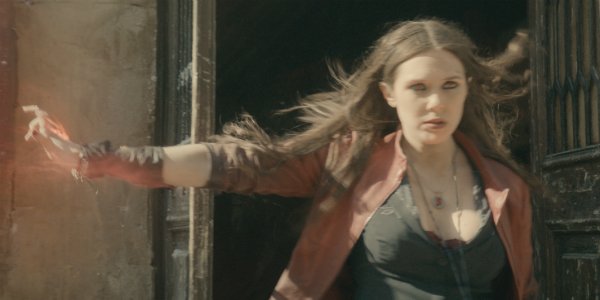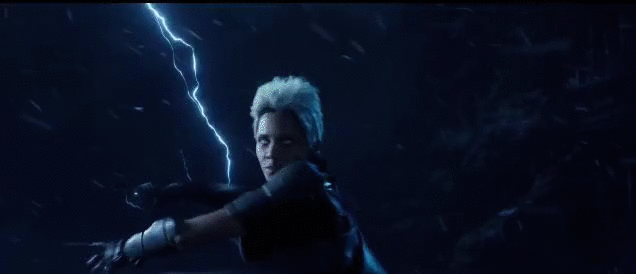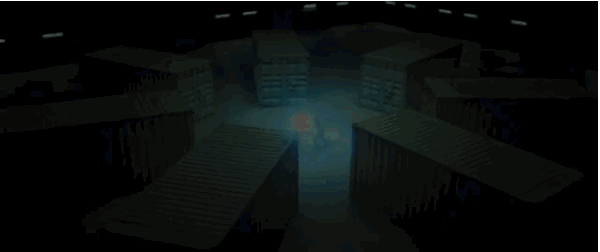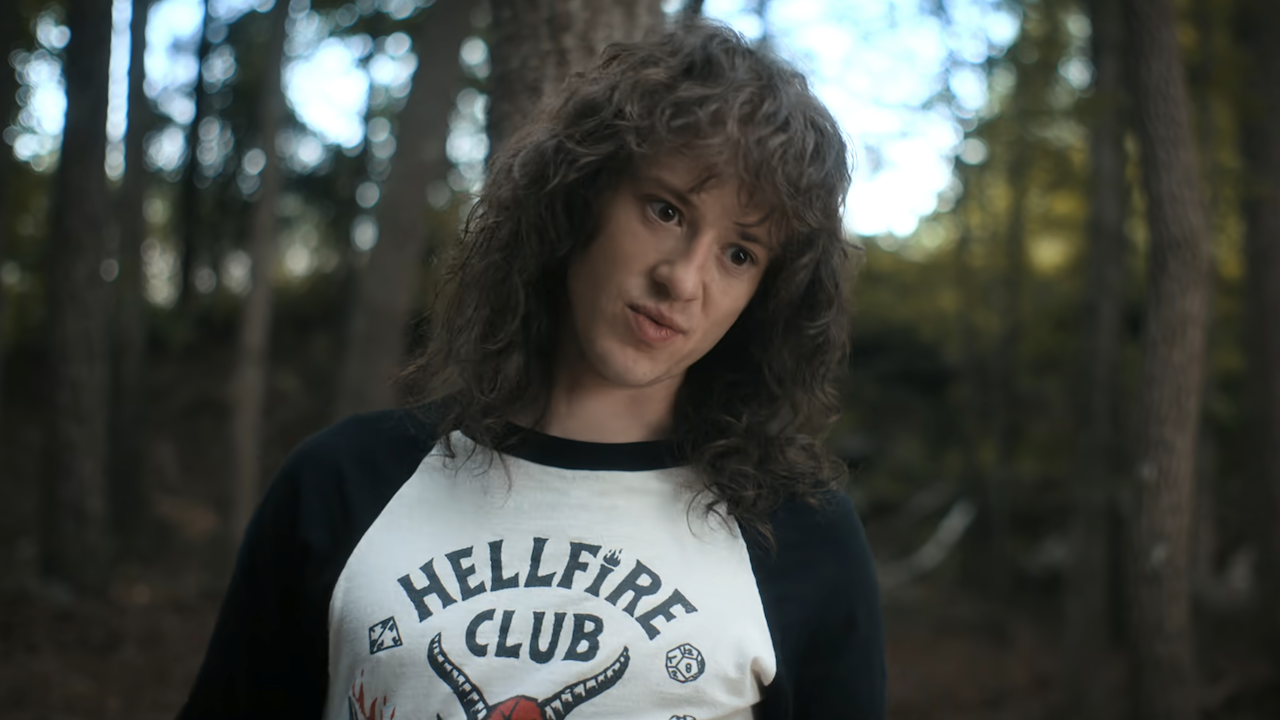How Avengers 2 And Scarlet Witch Prove We Need Stronger Female Heroes

Scarlet Witch is one of the most powerful beings in Marvel comics. The chaos magic she wields allows her to make the most unlikely events happen, and she’s been known to alter the very fabric of reality. Wanda even has her own famous story arc, called House of M, which sees the repercussions of willing some of her Avengers out of existence, re-structuring the world to fit her image, and virtually wiping the mutant race off the map. In short, she’s got everyone, hero and villain, trembling in their spandex.
This week, the character makes her first appearance on the silver screen in Joss Whedon’s highly anticipated Marvel follow-up Avengers: Age of Ultron. Though, the filmmaker has taken a few liberties with her abilities. While Scarlet Witch maintains an air of untamable power, she has traded in her limitless reality-warping abilities for more finite ones: telekinesis, mind control and telepathy. She’s still able to render Earth’s Mightiest Heroes mere puppets dangling from her strings, but it’s her strength -- and how it's portrayed -- that helps us make a compelling case to include more faithful adaptations of these strong female characters in Marvel movies.
Now, by "strong female character," I’m not referring to more well-rounded, relatable and prominent figures, as that phrase is commonly used. I’m referring more to their powers, as these are the real victims in the adaptation process. The issue with many female comic book characters -- from Scarlet Witch and Jean Grey to Storm and Invisible Woman -- is that their abilities pose a unique obstacle for filmmakers. Unlike their steroidal counterparts, their powers don’t usually consist of hacking and smashing. They are more elaborate, and based in visual effects. So how can they be created on screen in a way that’s believable to audiences? Reality warping is a difficult power on which to impose cinematic boundaries of what can and cannot be rendered on screen -- which, perhaps, explains why Scarlet Witch is a newly minted psychic. But, as we learned from Joss Whedon's Age of Ultron, the special effects budget isn’t the issue here. It can no longer be the scape goat when it comes to poorly rendered female character in these movies, because superhero films are no longer Hollywood experiments. They are proven cash cows, which means bigger, bolder effects are a given.
Storm, played by Halle Berry in the X-Men movies, tracks the development of VFX technology. Her character is a phenomena in the comics. She’s an African-American woman who leads the X-Men on several occasions and, though she is never formally classified as an omega-level mutant (meaning limitless potential), is much more powerful than most of the singular figures she faces. You would never guess this after watching the first X-Men in 2000, however. Once able to hurl electricity from her hands and wield such an intimate command of the weather on a molecular level, Storm, in the film, only let loose while underneath an open sky, which became an issue when she was easily overpowered by Toad and Sabertooth. Fortunately, her strength grew from film to film. It’s a shame Berry wasn’t featured more in Days of Future Past, because by that point, Storm was unleashing Mother Nature’s wrath upon the Sentinels. She came closer to her full potential as an on-screen hero

The Fantastic Four’s Sue Storm looks to be following the same general path of on-screen improvement. Jessica Alba and Tim Story’s rendition of Invisible Woman didn’t exactly inspire greatness, even though her comic book abilities far surpassed those of her male teammates. Alba’s Sue dabbled with her force fields and invisibility, and could only talk the talk when it came to other flourishes. (Oh yeah? You can make someone explode from the inside? Show me, don’t tell me.) Josh Trank’s rebooted version, however, has shown us very little footage of Kate Mara in action, but she’s already shoving steel shipping containers aside without breaking a sweat and flying straight through massive rock pillars like she’s the Man of Steel.

Scarlet Witch does not suffer from the constraints of VFX, but rather those of an overly populated film, perhaps. Age of Ultron has to serve many different roles, including: Avengers sequel; Captain America: Civil War prequel; Black Panther and Infinity War teaser; and an origin story for the Maximoff twins, Ultron and Vision. (Whew!) But even amidst all this clutter, Scarlet Witch still shines as one of the more enjoyable and, dare I say it, badass characters in the MCU. Aside from Black Widow, she’s one of the better adapted female super-powered characters of the Marvel universe, and the fact that they are few and far between better served her purpose.
While on the press tour for Age of Ultron, both Joss Whedon and Elizabeth Olsen teased that Scarlet Witch is like nothing the Avengers have seen before. And, for that matter, neither have audiences. In terms of women who are almost as powerful or just as powerful as their comic book counterparts, and therefore their male teammates, Wanda is a rarity. We have hopes that films like Fantastic Four, X-Men: Apocalypse (which is debuting a new Storm and Jean Grey) and, yes, Captain Marvel will feature more women with powers which the Marvel VFX teams have never attempted to visualize — not to mention ones that give the mighty Thor, the righteous Captain America and the self-serving Iron Man a run for their money. But seeing is believing.
Your Daily Blend of Entertainment News
